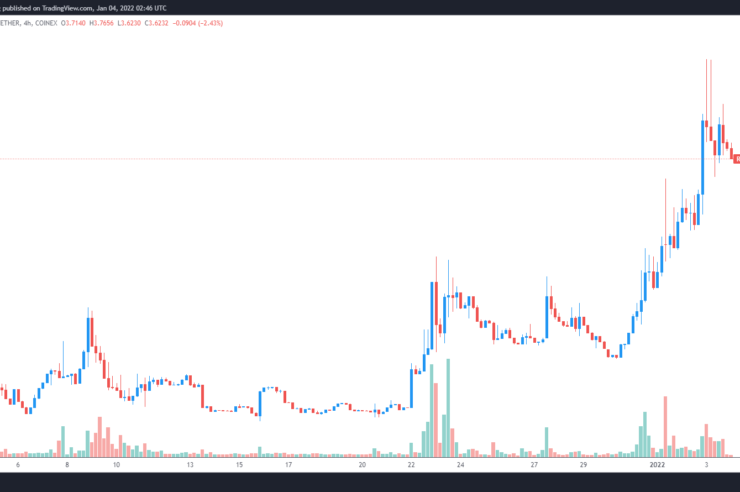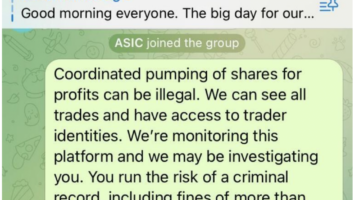Decentralized finance (DeFi) was one of the breakout sectors of the cryptocurrency market in 2021 and stands poised to continue to facilitate the mass adoption of cryptocurrency in 2022. This comes as institutional and retail investors embrace the emergence of Finance 2.0.
One DeFi project that has kicked off the year with a bullish start is Ribbon Finance (RBN), a protocol that utilizes financial engineering to create structured products such as automated options strategies. These are designed to provide users with sustainable yields over time.
Data from Cointelegraph Markets Pro and TradingView shows that since trading at a low of $1.83 on Dec. 30, the price of RBN blasted 146% higher to hit a daily high of $4.50 on Jan. 3 as its 24-hour trading volume spiked to $60.6 million.


Three reasons for the building momentum of RBN include the launch of Ribbon Finance V2, the addition of new blockchain networks to the Ribbon Finance ecosystem and an increase in the total value locked on the Ribbon Finance protocol.
Ribbon V2 launches
One of the biggest developments helping to drive the price growth in RBN has been the release of Ribbon V2. Originally announced in August 2021, the project has slowly been migrating liquidity and building its pools while also testing out new features.
Reminder to migrate your positions by Friday from V1 to V2 to be eligible for this week’s yield!
You will be levied exit fees if you withdraw your funds from V1, but migrating from V1 -> V2 is fee-free (other than gas fees)
— Ribbon Finance (@ribbonfinance) January 3, 2022
The upgrades that came along with V2 focused on the decentralization of Ribbon vaults. This includes the ability to allow smart contracts to set strike prices for the options the vault sells. Additionally, the creation of an on-chain auction mechanism allows anyone to participate on the opposite side of the vaults instead of just whitelisted market makers.
Ribbon V2 also includes an upgrade to the protocol’s vault accounting system. This involves the creation of governable vault parameters that allow RBN holders to have a say in determining the strategy that each vault deploys, as well as the management and performance fees that each vault requires.
These new upgrades should make Ribbon Finance more community-owned and also help to increase the long-term yields offered.
Ribbon adds support for Avalanche
A second reason for the boost in RBN’s momentum is the recent addition of support for the Avalanche (AVAX) network. Included is a new AVAX covered call vault where users can deposit AVAX and earn a yield of 24.18% at the time of writing.


According to the protocol, the addition of support for Avalanche “marks Ribbon’s first step into a multi-chain future,” which suggests that the project has plans to continue to add support for other networks as time progresses.
At the time of writing, there are 144,320 AVAX locked on the Ribbon Finance protocol worth roughly $15.3 million.
Related: What’s ahead for crypto and blockchain in 2022? Experts answer, Part 3
Total value locked hits a new high
A third sign hinting at the rising strength of Ribbon Finance has been the total value locked on the protocol which hit a new record high of $295.96 million on Jan. 3, according to data from Defi Llama.


The most recent significant boost to TVL coincided with the addition of support for Avalanche on December 15, 2021, and foreshadows the possibility of that integrating support for other networks. This could potentially lead to further increases in the future.
Aside from the AVAX covered call vault, Ribbon Finance currently offers six different automated products on the Ethereum (ETH) network including an Aave (AAVE) covered call strategy, a stETH-collateralized ETH covered call strategy, a yvUSDC-collateralized ETH put selling strategy, an ETH covered call strategy, a WBTC covered call strategy and an ETH put selling strategy.


The views and opinions expressed here are solely those of the author and do not necessarily reflect the views of Cointelegraph.com. Every investment and trading move involves risk, you should conduct your own research when making a decision.






















Comments (No)